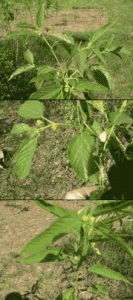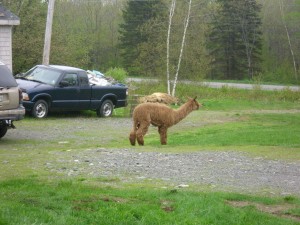Jute is a long, soft, shiny vegetable fibre that can be spun into coarse, strong threads. It is produced from plants in the genus Corchorus, which has been classified in the family Tiliaceae, or more recently in Malvaceae.
Jute is one of the most affordable natural fibres and is second only to cotton in amount produced and variety of uses of vegetable fibres. Jute fibres are composed primarily of the plant materials cellulose (major component of plant fibre) and lignin (major components of wood fibre). It is thus a ligno-cellulosic fibre that is partially a textile fibre and partially wood. It falls into the bast fibre category (fibre collected from bast or skin of the plant) along with kenaf, industrial hemp, flax (linen), ramie, etc. The industrial term for jute fibre is raw jute. The fibres are off-white to brown, and 1–4 metres (3–12 feet) long.
Jute needs a plain alluvial soil and standing water. The suitable climate for growing jute (warm and wet climate) is offered by the monsoon climate during the monsoon season.
White jute (Corchorus capsularis)Several historical documents (including, Ain-e-Akbari by Abul Fazal in 1590) state that the poor villagers of India used to wear clothes made of jute. Simple handlooms and hand spinning wheels were used by the weavers, who used to spin cotton yarns as well. History also states that Indians, especially Bengalis, used ropes and twines made of white jute from ancient times for household and other uses.

- Jute matting being used to prevent flood erosion – US Department of Energy photo
For centuries, jute has been an integral part of culture of Bengal, in the entire southwest of Bangladesh and some portions of West Bengal. During the British Raj in the 19th and early 20th centuries, much of the raw jute fibre of Bengal was carried off to the United Kingdom, where it was then processed in mills concentrated in Dundee. Initially, due to its texture, it could only be processed by hand until it was discovered in that city that treating it with whale oil, it could be treated by machine. The industry boomed (“jute weaver” was a recognised trade occupation in the 1901 UK census), but this trade had largely ceased by about 1970 due to the appearance of synthetic fibres.
Jute is a very adaptable fiber easily mixed with synthetic and other natural fibers.
Unfortunately, I was unable to get my hands on a spinnable jute fiber. I will not be able to give any description on dyeing it or spinning it.
I will be starting a wool series in about mid-june. Subscribe to the blog and newsletter for updates.
Romeo is trying to fly the coop for the freshly mown grass.
Tags: animal rescue, animals rescue maine, fiber processing, jute rope, jute spinning process, jute yarn, spinning jute, vegan spinning fiber, vegan spinning wool, vegetarian spinning fibers











